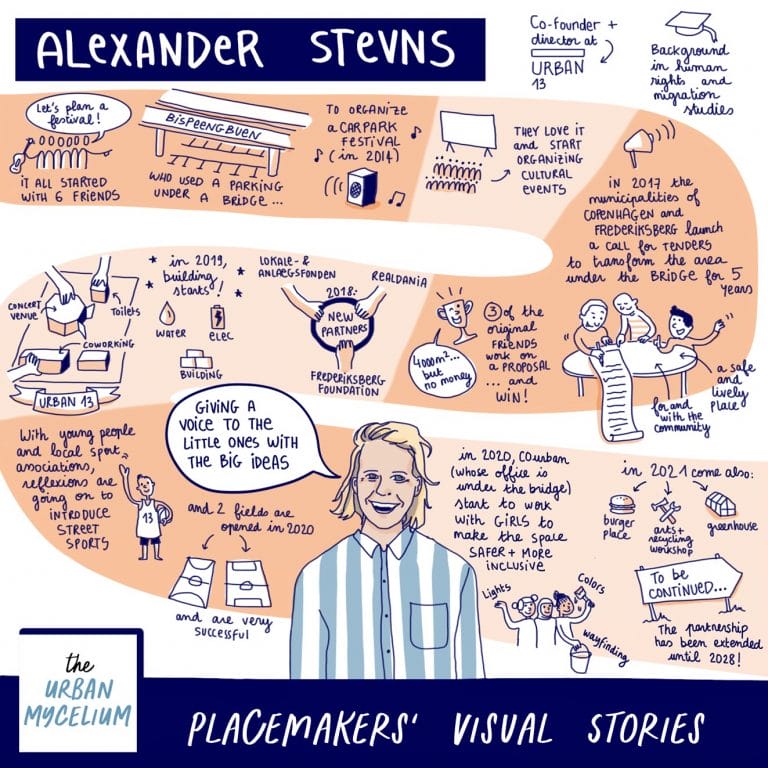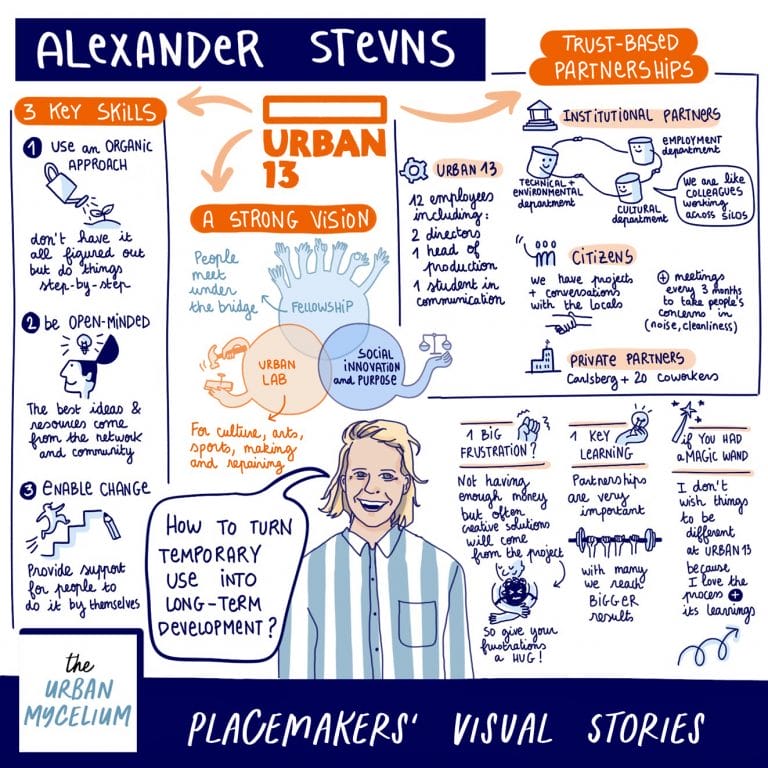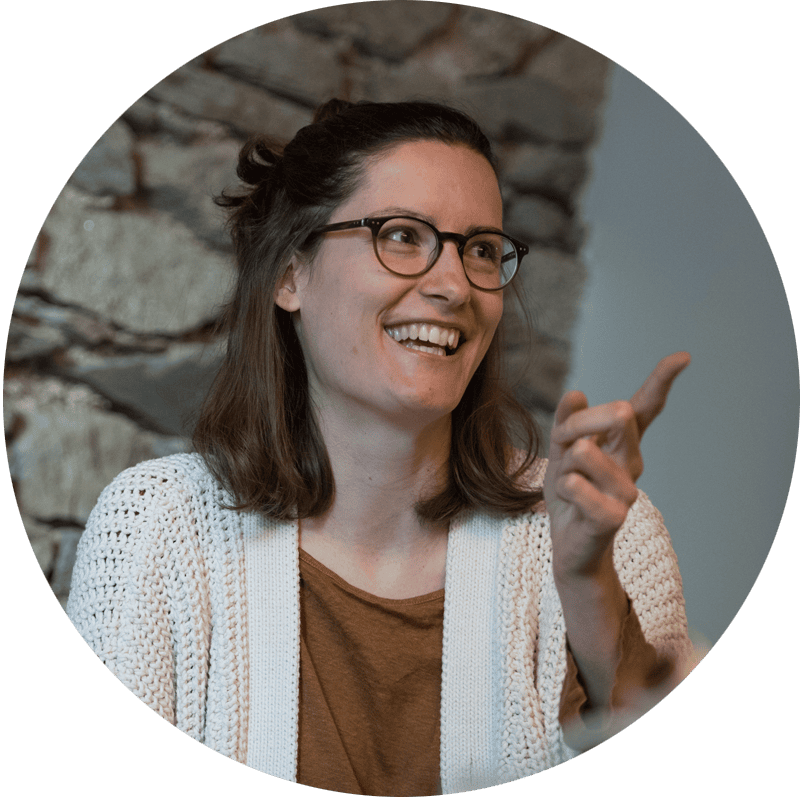In this episode of the Placemakers’ Visual Stories, I received Alexander Stevns, co-director of Urban13 and actively engaged in the transformation of Bispeengbuen, in Copenhagen. We talked about public space activation and what it takes to turn temporary use into long-term development.
Bispeengbuen is an elevated 6-lane motorway on the border between Copenhagen and Frederiksberg. Heritage of the 70s, the bridge runs through a densely built residential area. It is often discussed as a source of nuisance, causing a lot of debate among politicians and citizens.
In 2017, the municipalities of Copenhagen and Frederiksberg launched a call for proposals to activate the space under the bridge (at least until a decision would be taken about its fate).
Turning a parking space into a lively place
Alexander and his friends already had a connection to the space, as they had organized a music festival there, called “Carpark Festival”. Even though they had no money and were not “experts”, they saw a great opportunity to turn the car parking into a lively place for “the little ones with the big ideas”. They won the project with the promise to transform the place into a cultural, social and creative urban space.
The space under Bispeengbuen used to be a car parking. Today, after a few years of collaboration with the local residents and associations, it has become a place for the daily life, and a meeting point especially for the youth in the area.
Colorful containers are home to a coworking space (where Alexander’s office is located), a diner, a meeting room, a concert venue and a repair workshop. Yellow lines run on the floor, indicating places where to sit or a basketball and football field for street sports.
But what does it take to create a place for culture, social life and creativity? And how do you handle it, knowing that it has an expiry date?
Read Alexander’s visual story to discover:
- The story behind Urban 13 and the transformation of Bispeengbuen
- Alexander’s key learnings after 5 years of working under the bridge
- The success factors for turning temporary use into long-term development
You might also want to read Bettina’s visual story, whose office COurban is located under the bridge. She collaborated with girls in the area to make the space under the bridge safer and more inclusive.



